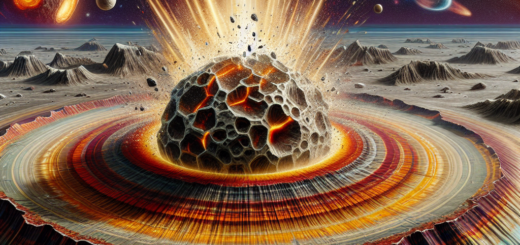Uncovering the Mysteries of Impact Craters: How They Form and What They Reveal
Impact craters are fascinating geological features that have intrigued scientists and researchers for decades. These circular depressions in the Earth’s surface are the result of the high-velocity impact of meteorites, asteroids, or comets. While impact craters can be found all over the world, they are particularly abundant on the surfaces of the Moon, Mars, and other planetary bodies in our solar system.
The study of impact craters not only sheds light on the geological processes that shape our planet and others, but also provides valuable insights into the history and evolution of the solar system. By examining the size, shape, and distribution of impact craters, scientists can learn more about the frequency and intensity of impact events in the past, as well as the composition and structure of the objects that caused them.
One of the most important aspects of impact crater research is understanding how these features form. When a meteorite, asteroid, or comet collides with the Earth or another planetary body, it creates a shockwave that spreads outward from the point of impact. This shockwave compresses and deforms the surrounding rock, creating a crater that is typically much larger than the object itself. The energy released during the impact can also melt and vaporize rock, creating a central peak or uplifted rim in the crater.
The size and shape of an impact crater can vary depending on a number of factors, including the size and speed of the impacting object, the angle of impact, and the composition of the target rock. Small impact craters may be simple bowl-shaped depressions, while larger ones can have complex structures with multiple rings, central peaks, and terraced walls. Some impact craters are so large that they are classified as multi-ring basins, with concentric rings of mountains and valleys surrounding a central peak.
In addition to their physical characteristics, impact craters also provide valuable information about the geological history of a region. By studying the age of the rocks in and around a crater, scientists can determine when the impact event occurred and how it may have affected the local environment. Impact craters are also important for understanding the distribution of minerals and other resources, as the intense heat and pressure generated during an impact can create valuable deposits of metals and other materials.
Overall, the study of impact craters is a key area of research in planetary science and geology. By uncovering the mysteries of how impact craters form and what they reveal about the history of our planet and the solar system, scientists can gain a deeper understanding of the processes that have shaped our world and others. As technology advances and new tools become available, researchers will continue to make exciting discoveries that push the boundaries of our knowledge about impact craters and their significance in the larger context of planetary evolution.













